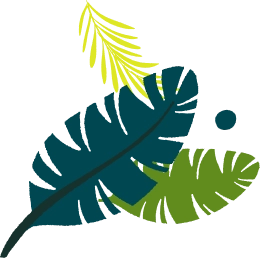


Strolling through Hanoi’s Old Quarter feels like walking into a living history book. This maze of 36 streets (some say 36 & more!) dates back to the 11th century and was traditionally divided by trades. Today it’s a bustling bazaar of street-food vendors, tailors, and hidden temples.
Every narrow lane has a story: Hang Gai is lined with silk shops, Hang Bac glitters with silverware, Luong Van Can overflows with lanterns and toys.
I love that here the past and present mingle - a bicycle passes an ancient pagoda door, next to a glass-front boutique.
P.S You have to try the top dish of Hanoi called Bun Dau Mam Tom while travelling here!
Hanoi’s Old Quarter (Hoan Kiem District) is in the heart of the city, west of the Red River. Here’s how to arrive:
From Airport: Noi Bai Airport is about 30-45 km north. You can book a taxi or airport shuttle into town (expect ~VND 350k-400k, or $15-20). Grab taxi work but note that there might be an airport surcharge.
By Train: If you arrive by train (Ga Hanoi station), you’re very close with just a 10-minute taxi or even walk south. The Old Quarter starts near the junction of Phung Hung and Hang Cot streets.
Walking/Cyclo: Once in Hoan Kiem, you can easily walk between many old quarter attractions (the district is small). Cyclo (pedicabs) are a nostalgic way to roll through a few blocks.
Tip: Download the offline map on google or use Here maps. The streets can be disorienting!
the Historic Gate of the Old Quarter Looks Rustic Yet Beautiful
Historic Architecture: Look up at the “tube houses” - skinny, multi-story homes with carved wooden shutters. They survived wars and city planning. The vibes are equal parts Chinese, French, and Vietnamese. Hang Nuoc, Ta Hien, and Nha Tho streets are scenic examples.
Traditional Markets: Don’t miss Dong Xuan Market (oldest indoor market) - it’s a sensory overload of fabrics, snacks and bulk ingredients. At dawn (5 to 7 AM), the adjacent Quang Ba Flower Market is in full bloom (lots of weekend visitors snap colorful photos there).
Old Quarter During Rain in Hanoi
Shopping: Each street was named for what it sold. For example, precious stones on Hang Bac (“silver street”), silk on Hang Gai. Now many shops sell souvenirs on these roads, but you’ll still find gorgeous silk boutiques and jade jewelry stores if you wander.
Street Food: The Old Quarter is the place to graze. Look for long lines - that means it’s good. Must-tries include bún chả (grilled pork with noodles) at old-school spots, bánh mì sandwiches at corner stalls, and bún thang noodle soup in hidden alley cafés.
After dark, the weekend Night Market sprawls over 1 km (cars/motos banned), where you can snack on sugarcane juice and caramelized squid, or shop for trinkets.
Delicious Vietnamese Food Served in Hanoi Market
Local Life: Peer into tiny bars where men play checkers, or see Buddhist monks at Bach Ma Temple (built 9th c.). Early morning is charming here - women in conical hats selling banh cuon and tourists sipping egg coffee at historic cafes.
Offbeat Finds: Keep an eye out for Train Street which is a narrow alley where a train clatters through twice a day. When it’s not passing, people sit drinking coffee inches from the tracks. It’s a weirdly fun photo op (just be respectful!). Also, stop by a hidden courtyard coffee house - you’ll find cute places on lanes like Hang Cua or Ha Trung, often tucked behind unmarked doors.
Getting Around: The Old Quarter’s best explored on foot. Streets are narrow, and traffic (especially motorbikes) can be chaotic. Meters for taxis/grabs usually run from the north or south entrances. If you drive a motorbike, note that several streets are one-way.
Opening Hours: The area never truly closes; streets are open 24/7. Shops and eateries typically run 7-22h. Dong Xuan Market is open daily (dawn to late evening). Temples and pagodas are usually open ~8 AM-5 PM (Bach Ma, Ngoc Son etc.).
Dong Xuan Market of Hanoi
Admission Fees: Walking around is free. You pay only for attractions: Bach Ma Temple (~30k VND entry), or any museum you choose. Eating and buying are pay-as-you-go.
Best Time to Visit: Early morning or late afternoon/early evening are magical - the streets are alive but not stifling hot. We love dusk, when lanterns start lighting up Hoan Kiem Lake nearby. Avoid mid-day rush if possible unless you love the hectic life of Hanoi which I know someone personally who does!
Nearby Amenities: Almost everything is nearby. Plenty of street stalls, cafes, and restaurants (just be savvy about hygiene). ATMs and shops open late if you need cash.
Note: The old quarter’s sidewalks are often crowded with parked bikes and street vendors - watch your step (and your back).
Hoan Kiem Lake in Its Full Glory!
Traffic: Crossing roads is the trickiest part here. Motorbikes will come at you. The local trick is to walk slowly and steadily; vehicles will weave around you. Always look left-right-left again!
Pickpockets: In crowded markets and the night bazaar, keep your valuables secure. Use front pockets or a money belt. Vietnam is generally safe, but common sense is key.
Haggling: In tourist shops and markets, bargaining is normal. Smile and start at about half the asking price. It’s a friendly dance, not a confrontation.
Respect: Don’t sit or step on temple altars; ask before taking photos inside any shop or restaurant. When drinking bia hoi on plastic stools, squeeze in with locals cheerfully - it’s communal.
Dress: Hanoi’s dress code is very casual, but if entering a pagoda, cover shoulders and knees out of respect.
Houses of Hanoi Old Quarter
Why 36 streets?
Historically, Hanoi’s Old Quarter had 36 guild-based streets named after the goods sold there. Today the exact number isn’t strict, but many names remain (like Hang Suoi - dish street, or Hang Buom - sail street for merchants). It’s a neat way to orient yourself and a fun history lesson.
What should I eat in the Old Quarter?
From pho (beef noodle soup) to bun cha (grilled pork & noodles) to street snacks like che (sweet soups) and egg coffee. Don’t miss trying a real Vietnamese coffee or a bowl of bun thang. Walking around, you’ll find stalls selling skewers, banh mi, bánh tôm (shrimp cakes) - just watch for popularity and hygiene.
When is the Old Quarter night market?
Every weekend (Friday-Sunday) from around 19:00 to midnight. It takes over Hang Ngang, Hang Dao, and Tran Hang streets (scooters are banned for safety). It’s very touristy but also fun for atmosphere and cheap shopping.
Is Hanoi Old Quarter safe at night?
Yes, very. Lots of people and open shops/cafes. The only “danger” is the heavy nightlife, so be mindful if you're drinking. Generally, tourist areas are well-policed.
Can I drive my car there?
Cars are difficult as many streets are one-way, narrow, and crowded. Even locals often switch off engines and walk. If you have a car, park at a lot just outside (around Dinh Tien Hoang or Hai Ba Trung St.) and walk.
Get the latest information about our tours and special offers!